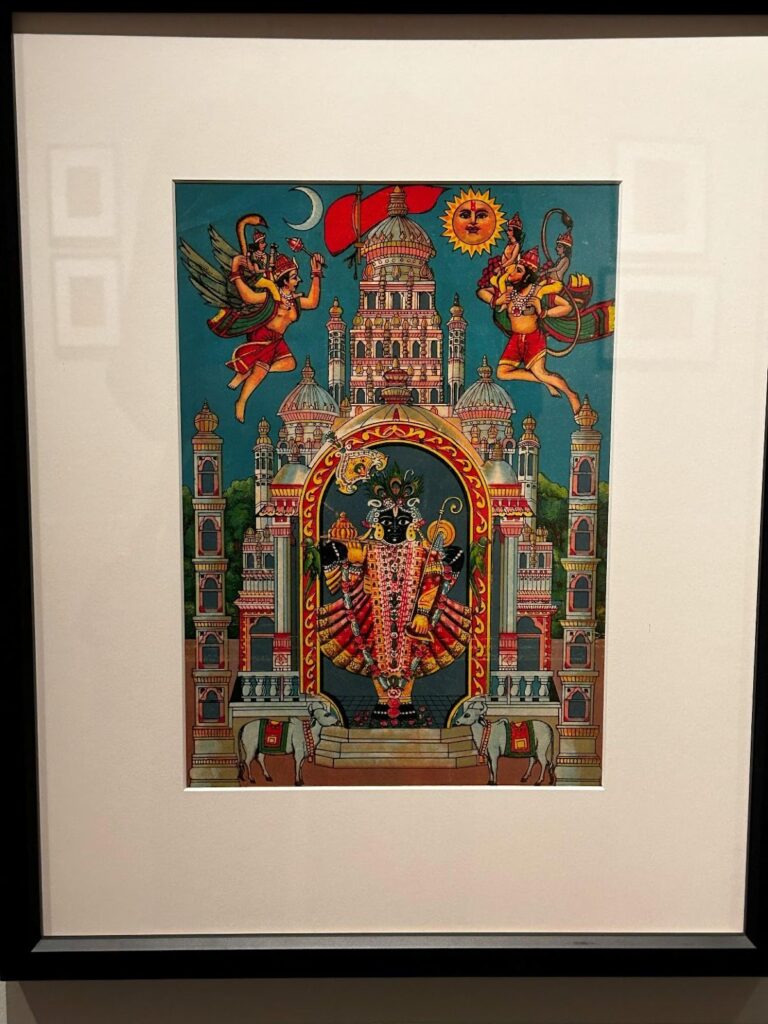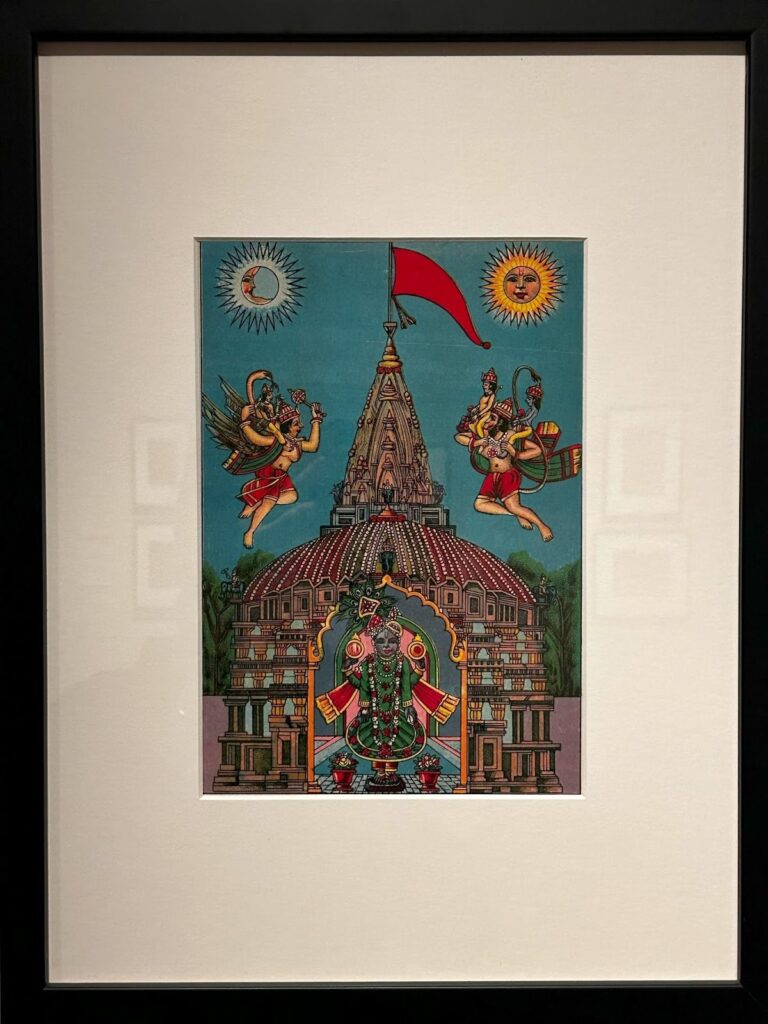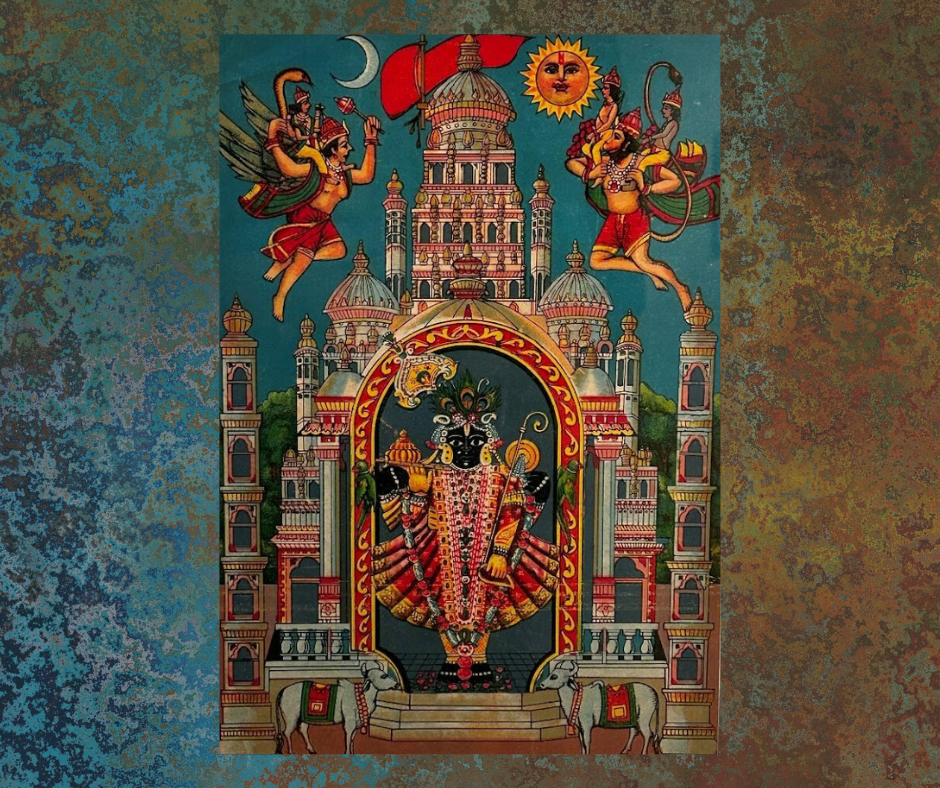On July 21, 2023, I drove downtown to visit the beautiful Dayton Art Institute (DAI). I have been there often but was especially excited this time because of the recently opened exhibition ‘Living with Gods’.
The exhibit is located in Gallery 117, right next to the Indian Art gallery. The ‘Living with Gods’ gallery is small compared to others, but still definitely worth the visit.
The Indian Art plaque at DAI explains that art has always been intimately tied to religion in Southeast Asia. As the birthplace of three important religions, India has produced a sculptural legacy that embodies the beliefs of millions of the world’s peoples. Although Hinduism’s roots go back to 2,500 B.C.E., it’s pantheon of deities were not widely personified in art until the 4th century C.E. The Living with Gods exhibition explores diverse figures and stories drawn from Hinduism and the vibrant visual styles used to bring them to life. According to the exhibition plaque, images of Hindu gods and goddesses were extremely popular in India in the 20th century. Previously limited to temples or palaces, changes in printing technology made colorful prints easily affordable and they permeated daily life, from stores and offices to homes and schools. Accessible images like these encouraged a direct, personal encounter with the divine. The gallery presents sections from a recent gift of 165 prints from Asian art scholars John C. and Susan L. Huntington.
The following are just a few of the prints that spoke to me:


DWARKADHISH TEMPLE:
These two prints spoke to me the most out of all those in the entire gallery. They depict a temple dedicated to Krishna, with the sun and moon depicted as metaphors. The sun and moon reflect my own spirituality, as they are duel in nature. I was raised in the Methodist Church, and I do still heavily lean towards Christianity, yet my spirituality has become more closer to natural, perceivable things like the sun and moon. Without the sun and moon, there would be no habitable place for humans to live. There would be no life on Earth. This is why I choose to include these life-giving heavenly bodies into my own expressions of worship.
VISHVARUPA:
The supreme form of Vishnu as depicted in this print stood out to me not only due to its size but also due to its vibrant colors and the many faces that are shown. Among them are many highly popular figures such as Krishna, Shiva, and Arjuna. That all are shown inside Vishnu reflects the Hindu belief that the deity contains all things.
DATTATREYA:
This print, according to the DAI, depicts a monk that is often celebrated as ana Avatar of the Hindu Trinity. Its description is what drove me to enjoy it as much as I do. I have always had the yearning to reject worldly desire and admire to live simple life that nuns and monks aspire to.
Those will be the only three prints I share so I do not spoil it too much for you dear reader! Make sure to go and visit the DAI before November 12 to see this beautiful exhibition graciously gifted by John C. and Susan L. Huntington.
And don’t forget, Sinclair students receive free admission!
Kay Tillie Peters
Staff Writer

